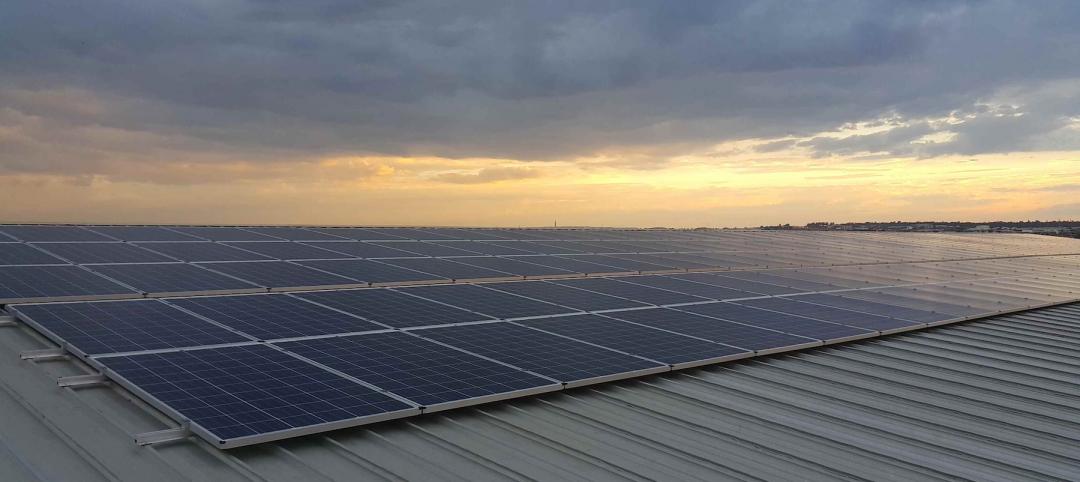Following months of political debate over the nation’s infrastructure spending needs, with multiple bills in play, the Senate took a major step forward in August, passing the $1 trillion bipartisan Infrastructure Investment and Jobs Act.
The bill—which faces scrutiny by House members before it is sent to President Biden for signing—includes $550 billion in new spending over five years for a range of initiatives related to bridges, roads, railways, even broadband Internet. Allocations include $110 billion for roads, bridges, and major projects; $66 billion for passenger and freight rail projects; $65 billion to expand high-speed Internet access; $25 billion for airports; $17 billion for port infrastructure; and $7.5 billion each for electric vehicles and zero- and low-emission buses and ferries.
When it comes to buildings-related investments, the bill is noticeably light on earmarks for initiatives in the commercial, institutional, and multifamily building sectors. It would set aside $500 million for energy upgrades in schools, but that’s about it.
“There is much more that Congress can do to improve our nation’s building stock,” wrote former House Rep. (D−Mo.) Russell Carnahan in a recent editorial in the SmartCitiesDive newsletter. Carnahan, Co-founder of BuildingAction, a non-profit group that advocates for policies and investments aimed at improving the nation’s buildings, opined that infrastructure upgrades and building investments should go hand in hand. Buildings, he wrote, “serve the national interest” and “impact our quality of life in many of the same ways as other infrastructure” does. And investment in building upgrades and new construction projects—especially energy-efficient buildings—tends to outperform investment in other sectors when it comes to creating jobs, according to BuildingAction analysis.
In late May, a collective of 21 AEC industry organizations, including ABC, ACEC, AIA, ASHRAE, BOMA, and USGBC, co-signed a letter to Congress pushing for funding in the infrastructure bill aimed at enhancing the resilience of the nation’s buildings. Citing nearly 4,000 deaths and some $550 billion in damage from weather- and climate-related events between 2014 and 2019, the group claims that “with new investments to support forward-thinking planning, design, and construction, the building industry can be a leader in saving lives and reducing costs.”
Regardless, unless the Senate’s infrastructure bill sees a major shake-up in the House, or a second heftier spending bill makes its way through Congress, the AEC industry will have to wait for the next major infrastructure spending initiative to state its "buildings as infrastructure" case.
Related Stories
Sports and Recreational Facilities | Apr 25, 2022
Iowa's Field of Dreams to get boutique hotel, new baseball fields
A decade ago, Go the Distance Baseball formed to preserve the Iowa farm site where the 1989 movie Field of Dreams was filmed.
Building Team | Apr 22, 2022
EarthCam Adds Senior Leadership Roles to Facilitate Rapid Growth
EarthCam today announced several new leadership positions as it scales up to accommodate increasing demand for its webcam technology and services.
Architects | Apr 22, 2022
Top 10 green building projects for 2022
The American Institute of Architects' Committee on the Environment (COTE) has announced its COTE Top Ten Awards for significant achievements in advancing climate action.
Mixed-Use | Apr 22, 2022
San Francisco replaces a waterfront parking lot with a new neighborhood
A parking lot on San Francisco’s waterfront is transforming into Mission Rock—a new neighborhood featuring rental units, offices, parks, open spaces, retail, and parking.
Legislation | Apr 21, 2022
NIMBYism in the Sunbelt stymies new apartment development
Population growth in Sunbelt metro areas is driving demand for new apartment development, but resistance is growing against these projects.
Building Team | Apr 20, 2022
White House works with state, local governments to bolster building performance standards
The former head of the U.S. Green Building Council says the Biden Administration’s formation of the National Building Performance Standards Coalition is a “tremendous” step in the right direction to raise building performance standards in the U.S.
Market Data | Apr 20, 2022
Pace of demand for design services rapidly accelerates
Demand for design services in March expanded sharply from February according to a new report today from The American Institute of Architects (AIA).
Multifamily Housing | Apr 20, 2022
A Frankfurt tower gives residents greenery-framed views
In Frankfurt, Germany, the 27-floor EDEN tower boasts an exterior “living wall system”: 186,000 plants that cover about 20 percent of the building’s facade.
Healthcare Facilities | Apr 19, 2022
6 trends to watch in healthcare design
As the healthcare landscape continues to evolve, IMEG’s healthcare leaders from across the country are seeing several emerging trends that are poised to have wide-ranging impacts on facility design and construction. Following are six of the trends and strategies they expect to become more commonplace in 2022 and the years to come.
Energy-Efficient Design | Apr 19, 2022
A prefab second skin can make old apartments net zero
A German startup is offering a new way for old buildings to potentially reach net-zero status: adding a prefabricated second skin.

















